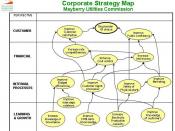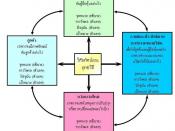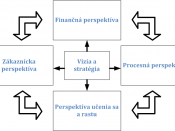The balanced Scorecard is ideally created through a shared understanding and translation of the organization's strategy into objectives, measures, targets, and initiatives in each of the four Scorecard perspectives. The translation of vision and strategy forces the executive team to specifically determine what is meant by often vague and nebulous terms contained in vision and strategy statements, for example: best in class, superior service and targeted customers. Through the process of developing the scorecard an executive group may determine superior service means 95 percent on-time delivery to customers. All employees can now focus their energies and day to day activities toward the goal of on-time delivery rather than wondering about, and debating the definition of superior service. Using the balanced scorecard as a framework for translating the strategy these organizations create a new language of measurement that serves to guide all employees' actions toward the achievement of the stated direction.
The balanced scorecard is a management system that enables organizations to clarify their vision and strategy and translate them into action. Not all scorecards are identical. There are many similarities and differences. For example, a typical scorecard and Oak Knoll's scorecard are similar in the way their process begins. The vision is the long-term status the organization is attempting to achieve. The mission is a statement of what the organization is doing over the next few years. And the strategies are usually decided upon by a small group, they reflect in line with the vision and mission. Some differences between a typical scorecard and Oak Knoll's scorecard are their perspectives. A typical scorecard measures an organization's performance from four perspectives: financial, customer, internal business process, and learning and growth. Oak Knoll's perspectives are organizational, stakeholders', financial concerns, instructional and administrative processes, and organizational capacity. These perspectives provide relevant feedback as...


